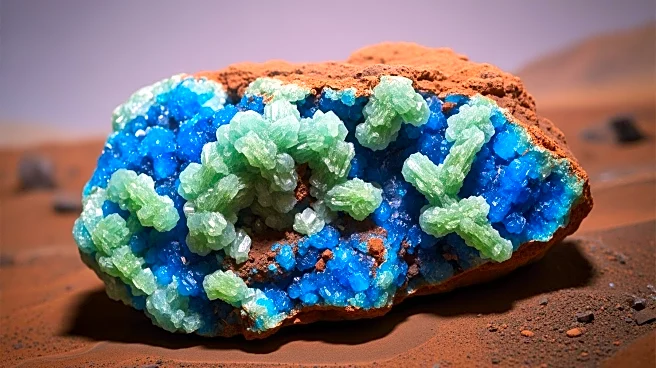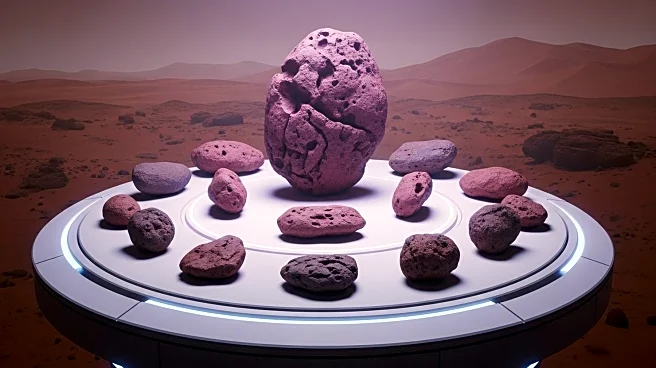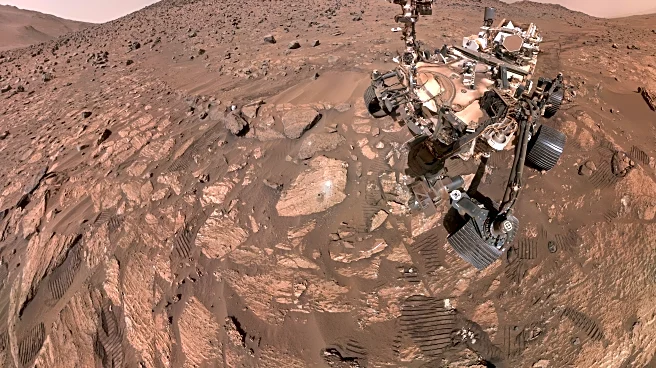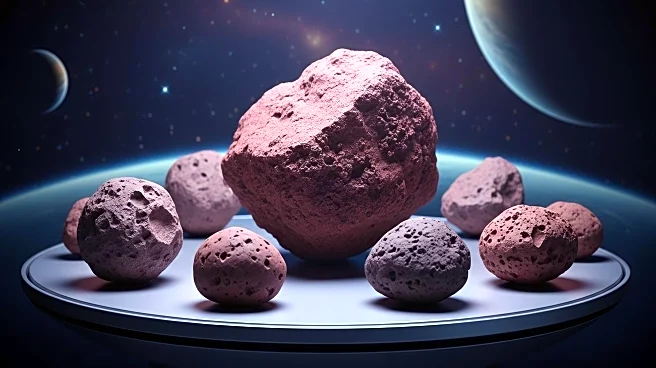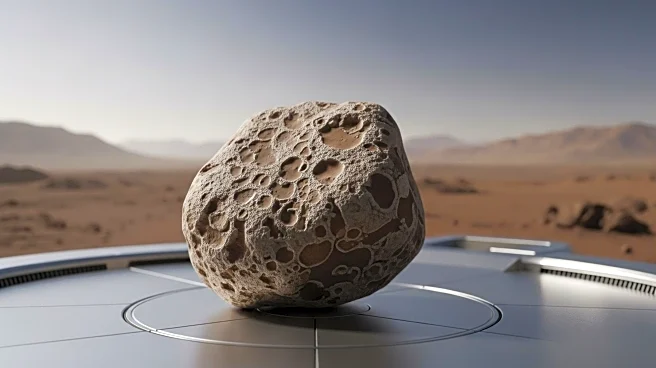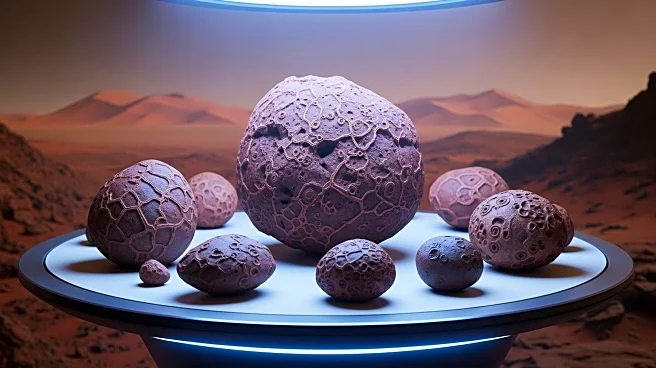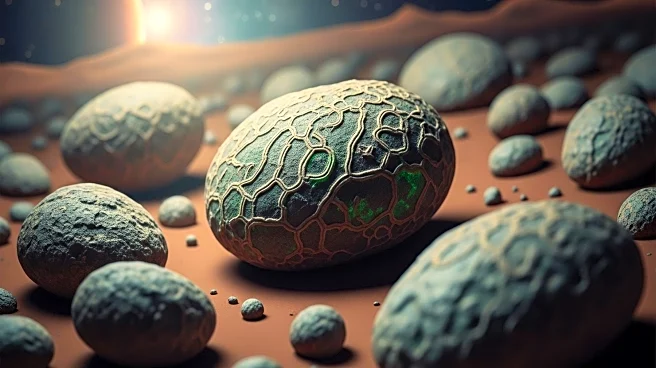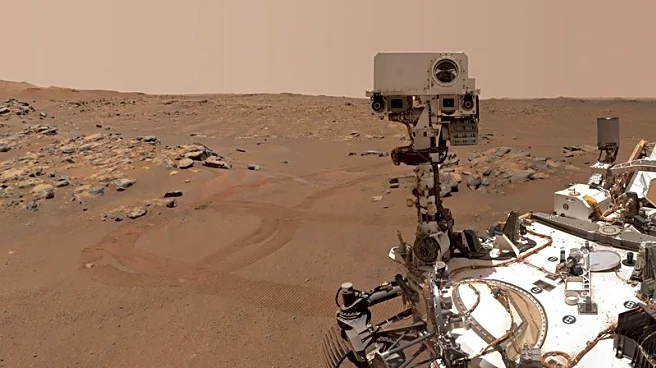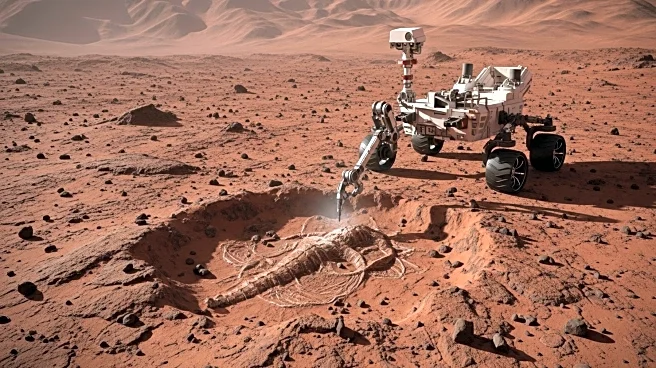What is the story about?
What's Happening?
NASA's Perseverance rover has identified vivianite and greigite minerals in a Martian rock sample named 'Cheyava Falls.' These minerals, found using the PIXL and SHERLOC instruments, suggest potential biosignatures, indicating a possible biological origin. The minerals are arranged in 'leopard spots,' which could have been formed by microbial life using organic carbon, sulfur, and phosphorus as energy sources. Vivianite and greigite are commonly associated with decaying organic matter on Earth, but can also form abiotically.
Why It's Important?
The presence of vivianite and greigite in Martian rocks could provide clues about past microbial life on Mars. These minerals are potential indicators of biological processes, suggesting that Mars may have been habitable. Understanding the formation of these minerals could help scientists assess the planet's past environmental conditions and the possibility of life beyond Earth.
What's Next?
NASA will continue to analyze the data collected by Perseverance to determine the origin of the minerals. Further studies will explore both biological and non-biological processes that could explain the features observed in the rock sample. The findings will contribute to NASA's Mars Exploration Program and the agency's Moon to Mars exploration approach.
AI Generated Content
Do you find this article useful?
